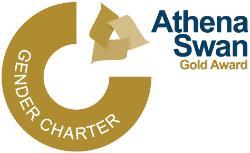SHW gender pay gap 2022
Published: 21 September 2022
SHW Athena Swan champion Breda Cullen feeds back on the current gender pay gap in our school and how we plan to address the issues raised
SHW Athena Swan champion Breda Cullen feeds back on the current gender pay gap in our school and how we plan to address the issues raised.

As part of our Athena Swan work, we provide information on the SHW gender pay gap annually and use this to inform our action planning to close the gap.
What is the gender pay gap?
The gender pay gap is a measure of the difference in the average pay of men and women in an organisation, regardless of the nature or level of their work. It highlights the different number of men and women across all roles. It is different from an equal pay comparison, which involves a direct comparison of two people or groups of people carrying out the same type of work or work of equal value.
How do we track this?
The UofG People and Organisational Development team provides information about the gender pay gap across all SHW staff, calculated as the difference in mean or median salary. Data are based on full-time equivalent salary. Market supplement payments are not included. A positive value for the gender pay gap means that men’s earnings are higher than women’s.
Gender pay gap results 2022
Results calculated in September 2022 indicated that the mean SHW gender pay gap was 19.7% (very similar to last year’s mean of 19.9%). The median pay gap was 5.7% (last year’s median was 2.9%). The large discrepancy between the mean and median gaps was again driven by the disproportionate number of female staff in lower grades (including some professional services roles), with 17 of the 20 lowest paid staff being women. Among the 22 highest paid staff, 7 were women, and 5 of the 11 highest paid staff were women. The most recently published gender pay gap results for the University as a whole in 2020 showed a mean gap of 14.7% and a median gap of 13.7%.
Data stratified by grade (grades 2-9 inclusive with MRC grades converted to UofG equivalents) indicated that the largest mean gap was evident for Grade 5 (6.6%); this was also the case last year. The gap was 5.1% at Grade 3 (though based on a very small number of staff), and at Grade 4 the gap was -5.5% in favour of women. The mean gaps were smaller for the other grades, ranging from -0.6% (Grade 7, in favour of women) to 3.4% (Grade 8).
At professorial level (excluding clinical staff) the overall mean gap was 13.8%, notably larger than last year’s gap of 8.2%. Similar to last year, the data for the four professorial zones indicated that the gap was driven by large differences within zone 3 (21.4%) and zone 2 (16.7%). Differences within zones 1 and 4 were smaller, at 4.9% and 3.2% respectively. It should be noted that these data are based on small numbers of staff in each zone.
The overall mean gap for clinical staff was 21.0%, again markedly larger than last year’s gap of 6.3%. Within the separate clinical grades, the mean gaps were: Clinical Academic 8.7%; Clinical Consultant -7.2%; unable to calculate for Clinical Research Fellow as all were male. The large gap for all clinical staff combined was driven by the fact that most Clinical Academics were women while most Clinical Consultants were men.
What happens next?
Work has already begun in collaboration between the Athena Swan Career Progression and Professional Services Staff working groups to address patterns of grading and career progression among professional services staff, especially those in lower grades. There is a need for the Athena Swan Self Assessment Team to look in more detail at the gaps among professorial and clinical staff, to understand what is driving these.
Breda Cullen
SHW Athena Swan champion
First published: 21 September 2022


